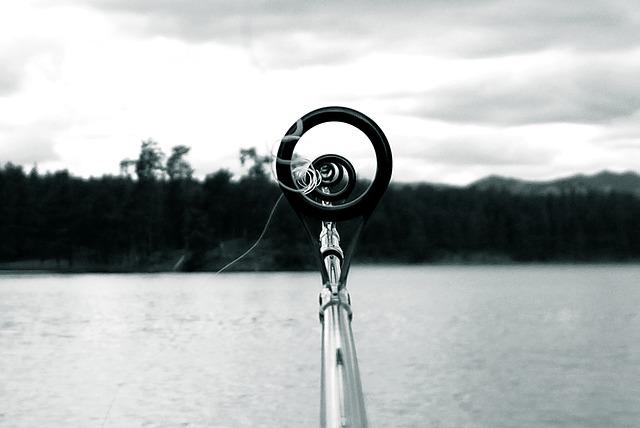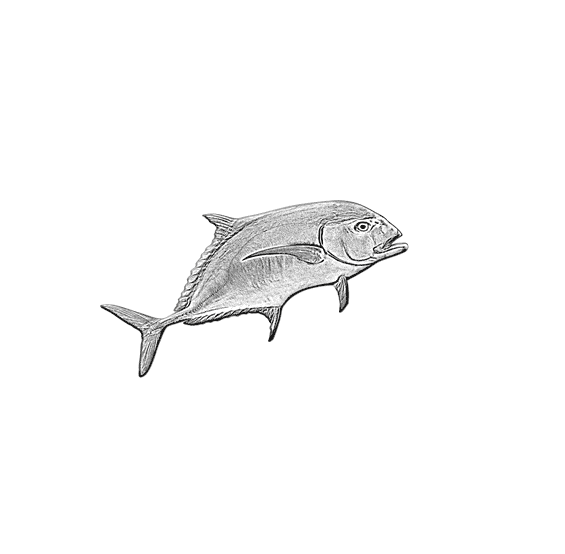
What are the Different Types of Fishing Line?
Fishing line is undoubtedly the most crucial piece of equipment that anglers will employ. It may not be the most flashy piece of equipment, but it attaches to lures and baits and is essential for catching fish. What are the many types of fishing line available? We’ll look at what traits fishing lines have in common, the distinctions between them, and their benefits and drawbacks.
Fishing Line Characteristics
There are some characteristics that all fishing lines have in common. Knowing these characteristics can assist you in determining which line is appropriate for you and which features should be prioritized based on your requirements. Let’s have a look at six features:
Memory

High memory line coiling
Does your line curl up when it’s off the spool, or lay straight? The memory of a curling line is greater than one that lays straight. As you reel in the line, it is more prone to kink or knot. Casting high-memory lines over long distances is likewise more difficult.
Stretch
Some lines are a little more stretchy than others. The stress caused by by fighting a fish is better handled by a stretchy line, but setting the hook is more difficult. Stretchy lines also don’t provide as much sensitivity.
Flexibility
The flexibility of a line is crucial since it impacts how easy it is to tie knots. You’ll be able to tie a larger selection of strong knots and more complex knots if your fishing line flexible. When the line is wet, tying it will be easier no matter what type of line you’re using.
Test Strength
A line’s “test” refers to its ability to absorb energy without breaking. If you’re fishing for large game, you’ll need a line that can withstand a lot of shock. The pound test determines how much strain a line can withstand before breaking. This number can be found on every line sold, generally measured in pounds.
Resistance to Abrasion
When you go fishing, you’re sure to come across rocks, pier pilings, or other obstacles. You want a line that can withstand abrasion so it doesn’t get scratched or degraded by various obstructions. Abrasion resistance is a feature of most modern fishing lines.
Visibility
Because many fish (especially those in freshwater) have excellent eyesight, you’ll want to use a fishing line that they won’t detect. You want a very clear line in clear water. Colored fishing lines are also available, which can be matched to the color of the water you’re fishing in. The line’s diameter has an impact on how noticeable it is. The fatter the line, the more visible it is to fish.
Buoyancy
Is the line a sinker or a floater? If you want to catch fish that stay deep in the water, use a dense, sinking fishing line. In topwater, lighter, more buoyant fishing lines will help keep the lure near the surface.
Types of Fishing Lines
Monofilament, copolymer, braid, and fluorocarbon are the four basic varieties of fishing line. Let’s define what they are, as well as their benefits and drawbacks.
Monofilament Fishing Line

A typical fishing line is monofilament. It’s built from a single synthetic fiber strand. It used to be the most popular fishing line, but that has shifted in recent years. It’s available in a range of colors, including clear. Heat and UV radiation are also harmful to it.
On the bright side, it’s great for topwater fishing, knots up quickly, and is really durable. It’s ideal for beginners because of its versatility and ease of usage. It’s popular because it’s the cheapest fishing line available.
When Should Monofilament be Used?
Monofilament is a wonderful line to use if you’re new to fishing and plan on fishing with topwater lures. If you’re using hard jerk baits (slashbaits), it’s also a terrific choice.
This line is also popular for Carolina-rig leaders since the leader will float rather than sink. Mono is ideal for use when you want your bait or lure to float near the surface of the water.
Monofilament Line’s Advantages and Disadvantages:
Advantages:
- Effective in topwater
- Low-cost
- A lack of visibility
- Excellent for tying knots
- Abrasion resistant
Disadvantages:
- For long casts, it may be overly stretchy.
- Coils, and kinks more easily.
- It isn’t resistant to UV rays.
Copolymer Fishing Line

Copolymer fishing line is similar to monofilament, except that it is produced from two different types of nylon, not just one, and it has some advantages. It’s a newcomer to the fishing scene, but it’s quickly gaining popularity. Copolymers tailored for a variety of circumstances, including deeper waters, are available.
It’s not as buoyant as mono, but there are certain copolymer formulations that are. It’s susceptible to UV radiation, heat, and water absorption, just like monofilament, but it’s reputed to be stronger and more abrasion-resistant. It has less memory, so there are fewer kinks to worry about. It’s a good idea to replace your spool after roughly a year to get the most out of your copolymer line.
Why is Copolymer Better than Monofilament?
When you need something a little more durable than monofilament, copolymer is a good option. Many of the features of these two lines are similar, but copolymer gives more strength.
It sinks as well. Copolymer line works nicely with suspending jerkbaits and swimbaits.
The Advantages and Disadvantages of Copolymer Line:
Advantages:
- Kinks and coils less than monofilament
- Extremely manageable
- More durable than monofilament
- More resistant to abrasion
- Because it sinks, it’s suitable for use in deeper water.
Disadvantages:
- Expensive compared to monofilament
- Susceptable to UV radiation damage
- Usually doesn’t last more than a year
Braided Fishing Line
See also Best Braided Fishing Line

This fishing line material is created by braiding polyethylene strands together. The number of strands used could be anywhere between four and sixteen. Braided line is a type of line that combines strength and thinness.
Because it has no memory and does not stretch, you can be extremely exact with your casting. It’s ideal for fishing in deep water. Braided fishing line, on the other hand, is very visible underwater. It’s also difficult to knot, and because it doesn’t stretch, it’s easy to accidentally pull your hook out when setting the hook. It’s does cost more than other lines.
When is it Appropriate to Use Braided Fishing Line?
This line performs well in low-visibility water with a lot of weeds and foliage since it’s strong. It also works nicely with spinning reels. Many anglers use it for deep bottom fishing, and jigging.
Braided Line’s Advantages and Disadvantages:
Advantages:
- Nearly no coiling, nor kinks
- Extremely strong and light
- Can be cast further
- Extremely sensitive
Disadvantages:
- Increases the wear and tear on equipment
- In clear water, it doesn’t work as well.
- Difficult to knot
- It’s difficult to break if snagged.
- Hard to cut (Needs special scissors)
Fluorocarbon Fishing Line

Fluorocarbon is a relatively new type of fishing line that has grown in popularity, particularly among fisherman. Fluorocarbon is pricey due to the material used and the manufacturing process. Fluorocarbon has an edge over other types of line. Its main claim to fame is that it is almost imperceptible to fish. In clean water, it’s an ideal line. Fluorocarbon is a stiffer line than other varieties. It can also withstand UV rays. Fluorocarbon is a high-memory fishing line.
When Should Fluorocarbon Fishing Line be Used?
Flourocarbon is mainly used for leaders, where it excels. For clear water, fluorocarbon is the best option. It isn’t bouyant, making it ideal for non-topwater fishing. Crankbaits that dive deep, as well as worms and jigs, work nicely with this line. Because fluorocarbon is abrasion resistant, it’s a good choice for fishing around rocks, weeds, and other obstacles.
The Advantages and Disadvantages of Fluorocarbon Line:
Advantages:
- The most transparent fishing line available
- Excellent resistance against abrasion
- UV-resistant
- Tight knots
Disadvantages:
- Expensive
- Stiff
Conclusion:
We’ve gone through the different types of fishing lines and given you some pointers on how to pick the best one for you. You should also consider your fishing surroundings and where the fish you want to catch live, in addition to factors like memory, flexibility, and strength. Will you require a line for deeper fishing, or topwater? Are the fish you are after “line shy”? Will you have to contend with a lot of weeds or rocks?
You should also think about how often you fish and how much money you have. If you fish frequently, it may be worthwhile to invest a little more in your line. The most expensive line types are braided and fluorocarbon lines.
Monofilament or copolymer are good options if you only fish once in a while and want a cheap, easy-to-use line. It’s crucial to choose the right fishing line. It could mean the difference between a disappointing fishing excursion and a fun day.
